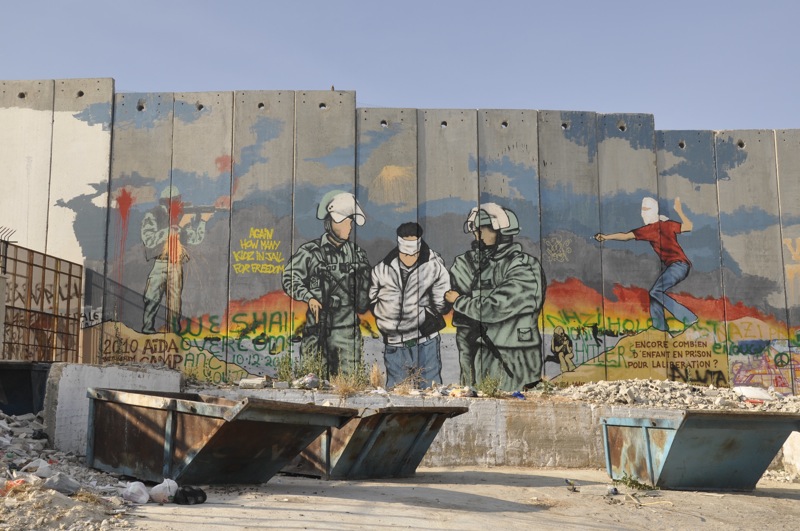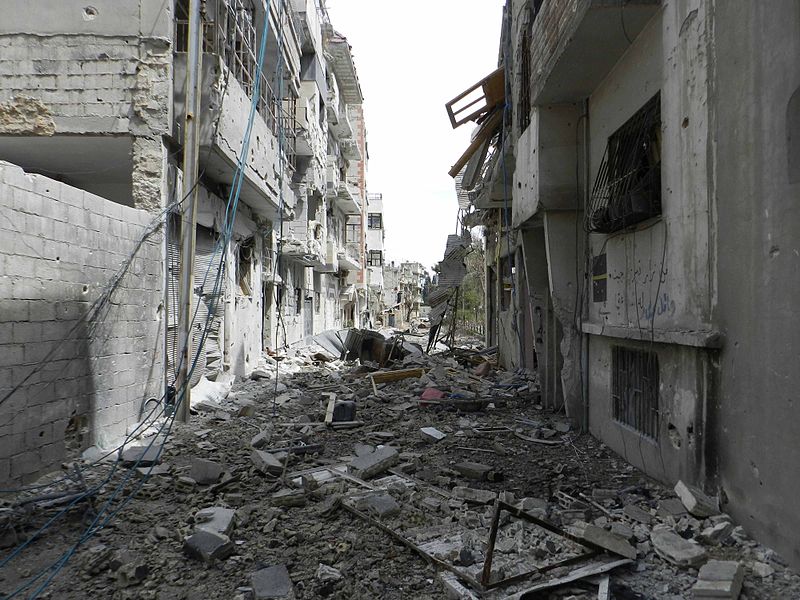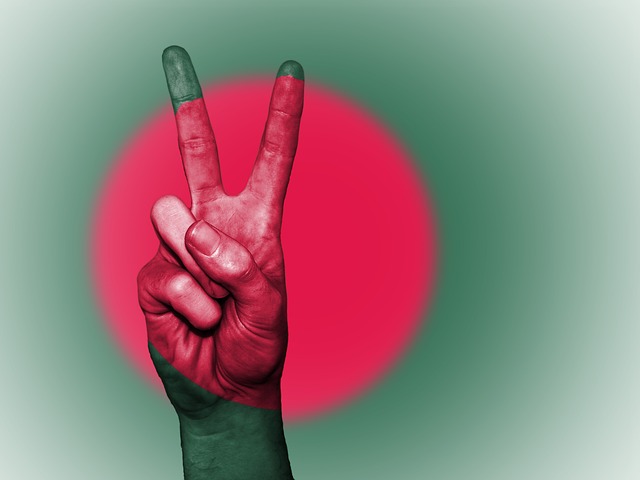Guest post by Ehud Eiran, Sivan Hirsch-Hoefler, Daphna Canetti, and Dana Vashdi
The unprecedented hot temperatures in the Middle East in July and August did not temper violence in the area. On August 6th, a Saudi suicide bomber killed 15 worshipers in a mosque in the city of Abha. A week earlier, unidentified assailants, possibly religious Jewish radicals, torched two houses in the Palestinian village of Duma, killing a baby and his father while severely wounding other members of the family. A day earlier, on July 30th, an orthodox Jew stabbed a teenager to death in Jerusalem’s annual gay parade.
Yet again, these events raise the old question: does religious identity inexorably lead to radical behavior and violence?
From the crusades to the Islamic State, it seems that religious identity drives some people to employ violence. A recent piece in Salon summarized this approach by asking “Why religion unleashes humanity’s most violent impulses?”
Such an approach opens the door to collective labeling. Even more, if some religious groups are more prone to violence, perhaps states are justified in making preventive arrests even if no specific evidence exists?
We are not sure this is the right analysis, nor the correct set of policies.
For democracies, at least, this approach may compromise civil liberties. Indeed, in April 2014 the NYPD shut its “demographic unit” that infiltrated and surveilled mosques and Arab stores and cafes, at least in part due to the labeling it signaled.
Moreover, the focus on religious ideology and identity may not capture what really drives individuals to take radical action. In surveys we have been conducting for a while, at least in the Israeli-Palestinian context, we are yet to find a meaningful relationship between the extent of religiosity and support for political violence of any sort.
So if not religion, what can explain radical action? In a survey we conducted amongst hundreds of Israeli settlers we tried to assess what – if anything – drove them to take part in radical, illegal action in the context of the Israeli unilateral withdrawal from Gaza.
The survey showed a low and meaningless correlation between religiosity and support for radical political violence. However, we did find some surprising results: Members of religious or political organizations and networks were far more likely to become involved in radical activities when compared to those who did not belong to any organization. We found that 42% of those who belonged to religious or political organizations and networks reported participating in radical political activities (such as using force against political figures) compared to 16% who reported such activities amongst those who did not belong to any type of organization. In other words, despite the possibility of individual radical action (the so-called “lone wolves”), the vast majority of those who participated in radical action did so with the support of a network or an organization.
It is not completely clear what it is about an organization that incubates radical acting, including violence: it could be the social legitimacy, the feeling of being part of something that is greater and more powerful than ones-self, or perhaps the resources and targeting. Either way, both insights – the role of organizations and the slippery slope – chart a possible path to dealing with the current wave of violence.
The focus of those concerned about violence should shift from the current public emphasis on religious ideology and those who are exposed to it. Rather, law enforcement agencies and the public should be concerned with the networks of mobilization, particularly those that are involved in radical activities which are illegal but which nonetheless fall short of violence. At least in the Israeli case, while the government does monitor some organizations, it is far from clear that it takes the latter all that seriously. Since 2008 there have been hundreds of incidents (commonly known as “Price Tag”) in which fringe settler groups attacked Palestinians and their property. There were, however, very few prosecutions or efforts to single out the networks and organizations that are engaged in these attacks. This is obviously the result of priorities, but also of focus.
Saudi Arabia and the West Bank largely escaped the regional upheaval in the Middle East. However, in both cases there are elements of fundamental instability which could easily ignite a larger violent eruption. The potential costs of another major round of violence in the region are high for both civilians and states, including the United States. Measures aimed at networks and organizations that can potentially ignite such violence can reduce, at least to some degree, the chances that the sparks we have seen on the ground in the last few days will catch fire.
Ehud Eiran is an Assistant Professor of International Relations at the University of Haifa, Israel, and served formerly as the Assistant to the Foreign Policy Advisor to the Prime Minister. Sivan Hirsch-Hoefler is an Assistant Professor at the Lauder School of Government, Diplomacy and Strategy at the Interdisciplinary Center Herzliya as well as a Senior Researcher at the International Institute for Counter-Terrorism. Daphna Canetti is a Professor of Political Science and Chairperson in the Department of Political Science, University of Haifa, Israel. Dana Vashdi is an Associate Professor and Chairperson in the Department of Public Administration, University of Haifa, Israel.







1 comment
My formula for this is a lot simpler and seems to be pretty durable:
My view is that “Religion” is in itself, more of a vector towards identity than anything else. I came to this conclusion after observing that the same tendencies expressed by the inhumane treatment of women, for example, are expressed at various times by any community regardless of that community’s beliefs. Ie: you’ll find the same exclusion of women in late 19th/early 20th century Christian America as you’ll find in Saudi Arabia today. Other examples of this are easily discerned. Are the ways in which Islamic and Hindu societies conceive of and treat women as male property inherent in the religious beliefs often used to justify them? Or are they the products of village life and its enforcement of property rights (because marriage is also a property contract), with the notable lack of norm-reinforcing institutions (police and courts)?
I’m a big believer in path dependency.
As a result, I believe that in the phrase “religious identity,” identity is the term that matters. So one the questions for me is what forges an “identity” out of community? Why are some identities cohesive and others loose? How can a strong coalition of communities emerge from a loose, ill-defined group or a tight, cohesive unit fragment into its component constituencies? My working assumption on this is that this is dependent on the perception of the existence of an external “threat.” In other words: We are defined by “The Other.”
This is context sensitive, situational and fluid.
I also carefully distinguish between “radical” and “militant.” Radicals are those seeking structural societal change of one kind or another. Ie: “get the money out of politics” or,conversely, creating a system where people’s political participation is best described as “one dollar, one vote” are both “radical” positions, yet only one is “militant.” And I impose a broad definition of militancy here as well. Putting a few hundred or tens of thousands of people into the streets to protest, say, overly aggressive policing of the Black community in America is to me an act of militant disruption. For disaffected and alienated communities, I also happen to believe it can be necessary. Blacks in America are trapped inside the Stanford Experiment.
But when do communities reach the tipping point when militant acts begin happening? Look at property. Look at livelihoods when available property resources are thin. Either communities in conflict seek property or aggressively defending that (or their livelihoods). When you begin to see a perceived threat to property, you’ll see conflict follow sooner or later. I’m a retired data analyst and I love data, but I know of no dataset or synthesis of data which captures this, unfortunately. Yet as I said at the outset, this process seems to hold up pretty well anecdotally.
Don’t over-think this. Often, we dismiss a theme as being facile even in the face of repeated examples of it’s application. That’s not necessarily a fault in the analysis, but often a failure of ours in wrapping our heads around the assumptions of a seemingly problematic line of analysis. As I tell economists regularly, you have to go back and retest your assumptions.